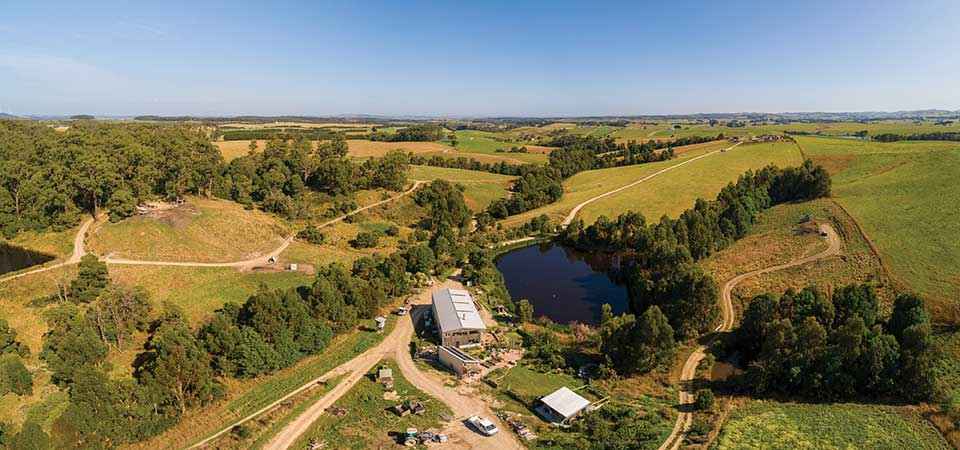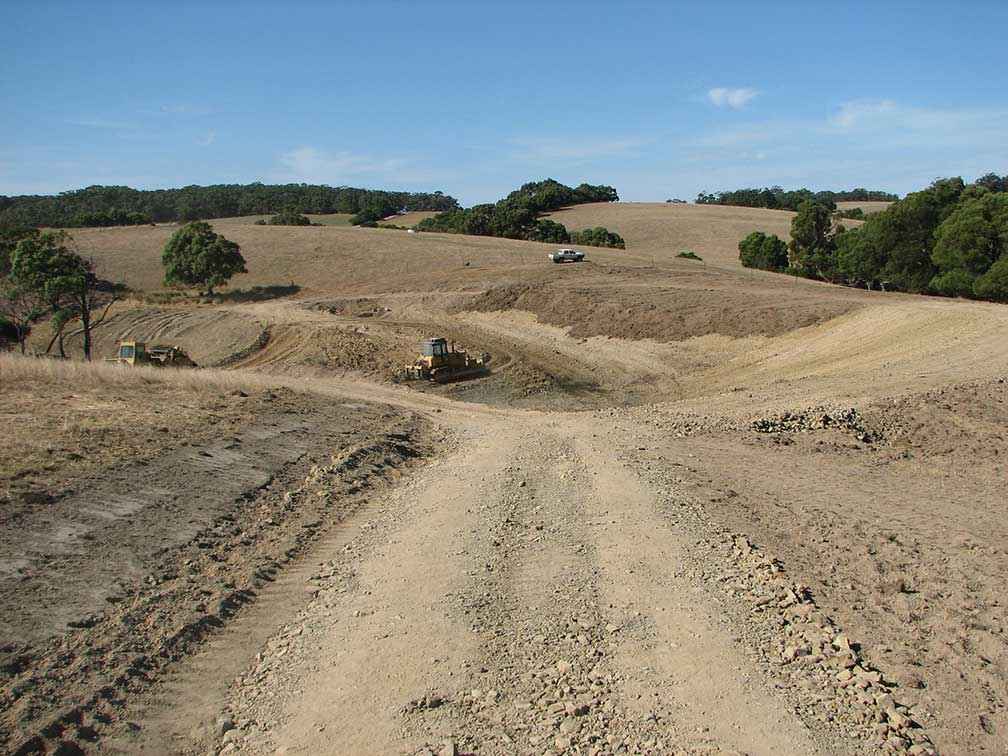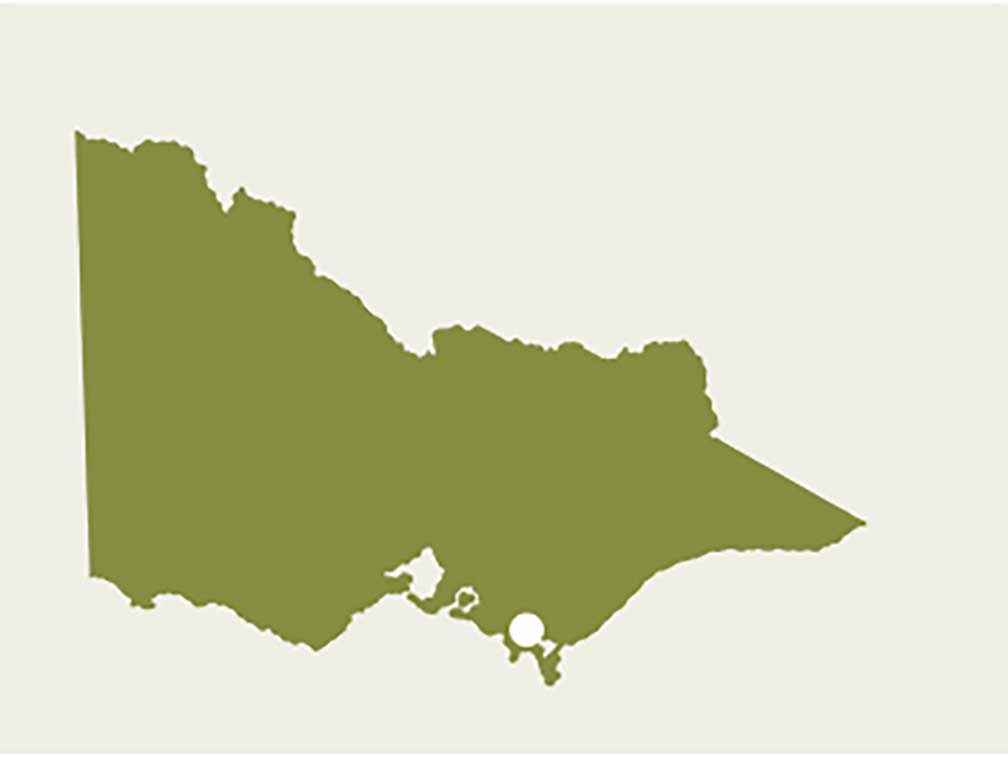Victorian Landcare Magazine - Summer 2021, Issue 80

I grew up on the farm next door and used to spend my spare time in the bush and creeks on this place. I often dreamt of owning this land and what I would do with it. My trade as a diesel mechanic and the mining boom of the 2000s enabled me to buy the land at Fish Creek.
Our property is 66 hectares and 26 of those are remnant bush.
Amber Creek runs right through, with three tributaries joining on the property. Its diverse landscape rather than its productive capacity was what initially interested me.
There was no infrastructure on the farm and minimal history of pasture improvement. I was 26 years old and didn’t yet know what I wanted to farm, just that this was a piece of land I felt a strong connection with. I agisted the land to a dairy farmer who ran young cattle here.
Before I could fully fence off and plant out the creek from the cattle the farm needed water infrastructure. I identified a site for a dam and researched dam and wetland construction. Once the dam was dug I established a system of pipes and troughs around the farm. This was in the millennium drought years of 2008 and 2009. The dam filled through the winter.

Above: Building the dam at Amber Creek Farm during the 2008 drought.
In 2010 I fenced off the rest of the creek. The farm now had all of the pasture separated into eight paddocks. I was planting up to 5000 trees a year to revegetate the gullies. As the initial plantings became established wallabies moved in which has made recent plantings a challenge.
I bought a portable sawmill to mill timber for the buildings I was planning. I discovered I enjoyed sawmilling immensely. I started contract sawmilling and it soon became a small business. I built a workshop and set up off-grid solar power and a rainwater tank. I lived in an old caravan on the site.
In 2012 I met my wife Amelia and my energy for the farm and business had a new purpose.
It was time to start farming. We identified a market opening for high-quality pork.
We bought six weaner gilts (young female pigs) and grew them out to finisher size. Milly embarked on our first pork marketing exercise selling directly to family and friends. We processed three of the gilts and kept three for breeding. The meat looked great and the feedback from customers was positive, so we decided to continue.
We started off with a standard free-range pig set-up with the pigs fenced in on an area of paddock until it was eaten and dug bare, then moved to a new section and repeat. As the herd increased it became apparent that this was degrading the soil.
We considered the resources we had available and what we could do to fix the problems and farm pigs in a way that enhanced the land.
The sawmill was producing a reasonable amount of trash – unusable sections of logs. We hired a chipper and made woodchips for pig bedding, and to soak up manure and spilt feed. This immediately improved the situation, reducing odour, flies, manure runoff and provided the pigs with somewhere to get out of the mud in winter.
The next phase of pig farming development was to keep the pig’s shelters and feed and water troughs on home pads (15 metres by 30 metres) covered in a thick layer of woodchips and strip graze the pasture around it. After a few years of having pigs in these paddocks and using a minimum till renovator to plant crops, the pigs mainly graze and dig very little.
Initially we were buying grain, this was an enormous financial strain and we sought out alternatives. We were offered the opportunity to buy (for a modest fee) the waste and spilt grain from a local grain mill. This helps their business as they are not paying for waste removal. Twice a week we also access trailer loads of veggies from a local grocer and daily pick up of whey which forms half of the pigs’ diet. The other half is pasture and crops we grow ourselves.
The development of the home pad system has continued. We add more sawdust and woodchips as manure and spilt feed builds up. Once a year we scrape the home pads into large piles for composting. The compost is then spread over the paddocks as fertiliser. We have replaced the soil we lost initially and continue to add to its vitality and to sequester carbon.
When I was working in the mining industry it was financially rewarding, but I felt a huge gap between my values and actions. Milly and I have four important measures of success for our business. That it enhances the environment; supports and engages with the local community; provides an interesting and engaging place to work; and, is financially profitable.
Both the timber and pork sides of the business have continued to grow. Amber Creek Farm now employs Milly and me along with three full-time and four part-time employees. We have achieved three of our measures of success and are getting close to consistently achieving the last.
Daniel and Amelia Bright run Amber Creek Farm and Amber Creek Sawmilling at Fish Creek. For more information email amber.creek.farm@hotmail.com

Above: Location map - Fish Creek